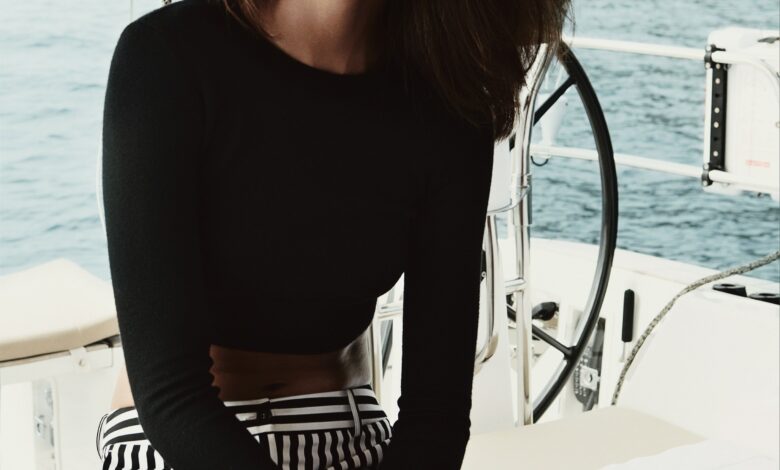I’m A Black Woman Who Loves Self-Tanner… Finally, The Beauty Industry Has Caught Up

Products are independently selected by our editors. We may earn an affiliate commission from links.
Many years ago, long before recognizing the damaging effects of the sun and becoming an SPF obsessive, my holidays would consist of whole afternoons spent basting myself on the beach while covered in oil. Yes, really. If you looked up “sizzling human turkey” in the dictionary, you would have found me there. One day, after another four-hour sun session, I went back to the apartment to get ready for dinner. As I showered, the skin on my chest came off clean in my hands. Lesson learnt. Like so many Black women who love to tan, I still hankered after that “healthy” (but actually not healthy at all) glow that you get from the sun, but I was no longer willing to risk my health for it, which is where sunless tanning products come in.
In 2019, I wrote a piece for British Vogue about my first experience as a Black woman getting a sunless tan. It was with Amanda Harrington, the incredible tanning expert whose body-contouring technique has earned her an impressive A-list clientele (she’s known as the “Michelangelo of tanning”). The results were extraordinary: golden, deliciously even and confidence-boosting. This, I told myself at the time, was the start of a lifelong affair with spray tanning. I was wrong—I haven’t done it since. My choices were frustratingly limited: Self-tanning products were either chock-full of alcohol or simply didn’t cater to deeper skin tones. I knew a few Black people who secretly used sunbeds; they were aware of the risks and were willing to take them, but I wasn’t. Fast forward five years and the changes across the industry—from the evolving attitudes towards tanning to the plethora of beautifully formulated sunless tan products available across all skin tones—are quite astounding. Brands such as Clarins, James Read, Isle of Paradise, Tan-Luxe, and Vita Liberata are leading the charge, and the messaging is loud and clear: A vast number of consumers—yes, Black people included—want to look sun-kissed without the wrath of the sun or the sunbed.
This accountability of the tanning industry is reassuring, agrees Gemma Jones, Institut Esthederm’s brand trainer, “especially as scientific research shows the consequences of what irresponsible and unprotected exposure of the skin in the quest of tanning can ultimately lead to, from premature photo-aging to skin cancers.” Nevertheless, Jones is quick to acknowledge that, “There is, and arguably always will be, a strong consumer-led desire to appear sun-kissed and achieve a tanning glow in order to look healthier.” As someone who has always had a diversity of clients in his tanning booths, Jules Von Hep, founder of Isle of Paradise, felt that brands creating products that excluded people of color were “ludicrous.” “The idea is unfortunately something that was created during the 1990s and 2000s by the self-tan brands in their marketing campaigns, which only targeted paler skin tones. Today, with TikTok and Gen Z really leaning into #BlackGirlTanning, it’s clear that the mindset that thinks ‘self-tan is only for one skin tone’ is on its way out.”
Another element of self-tanning that’s exiting is the old skin-drying formulas. The new generation of inclusive self-tanning products are so hydration-focused focused they will give their skincare cousins a run for their money. James Read, one of the tanning industry’s stalwarts, has recently launched his newest brand, Self Glow. To cater to all skin tones, he moved away from synthetic tints and used cacao extract as the natural color guide, “which I discovered through years of testing on multiple people—different ages, skin tones, skin types. It naturally adjusted to every skin tone and provided a warm glow while also removing ashy tones from the skin.” His hydrating and brightening-skewed ingredient list also includes hyaluronic acid, squalane, kakadu plum, vitamin E, and aloe vera, all of which would have been unheard of with their predecessors. However, formulations, says Read, are not the only thing that needs a rethink. If it was down to him, we would no longer use the word “tan.” “The trend with tanning has moved more towards glow and skin enhancement, rather than physically altering or changing skin, which is largely why my brand is called Self Glow, as the desire and end product is all about natural warmth and glow to the skin as opposed to the skin being changed.”
Alyson Hogg, founder of Vita Liberata, agrees the distinction is key. “There is a common misconception that tanning only exists to make skin tanned, but this is not true. Self-tanning can also be used to even out skin tone and hyperpigmentation. It also creates a base glow that makes the contrasts on the skin less noticeable. During winter, deeper-toned skin can sometimes appear ashen and lackluster, and a touch of self-tan can work wonders, bringing back its natural warmth and glow.”
In search of said glow, I contemplated the new guard of products from all the aforementioned brands. There were creams, oils, waters, mitts, serums… Oh, the possibilities! And then I began thinking of the aesthetic labor of beauty—this work of improving and maintaining our appearance— and felt exhausted. Weeks later, while trying on a Molly Goddard dress in a large changing area drenched in natural light, I caught sight of my legs and thighs. Despite my daily exfoliation, my skin resembled a grainy ’20s silent movie in desperate need of Technicolor. I bought the dress and made a beeline for the self-tanning products, and here is what I learned: don’t get overwhelmed by the plethora of textures, go for what you personally love. Oils are my go-to as they absorb easily and leave a shine. If you don’t want to get rid of your body hair, that’s fine too, the products still work. However, pay attention to the instructions. I didn’t. I topped up the oil with concentrated drops, which you were supposed to mix with moisturizer beforehand. My skin was already moisturised so I thought, ‘Ah, it’s fine!’ The result? Five days later, my palms still look like the love child of an aged orange and jaundice. My body, on the other hand, is a deep, dark glowy chocolate that isn’t quite my natural skin color but makes me look like I’ve spent a week basting on the Amalfi Coast. I’ll take it.


